Did you know that over 30% of orthodontic treatment cases involve more than just crooked teeth ? While most people visit an orthodontist for a straighter smile, the reality is that specialists correct a wide array of conditions affecting the mouth, jaw, and even breathing. If you think orthodontic care is only for those with misaligned or crowded teeth, you’re in for a surprise: Orthodontists treat complex issues that impact overall oral health . Let’s dive into the world of comprehensive orthodontics and discover what these specialists really do.
Did You Know? Over 30% of Orthodontic Treatment Cases Involve More Than Just Crooked Teeth
Many people associate orthodontic treatment primarily with fixing crooked teeth to achieve a beautiful smile . However, research shows that nearly one-third of all cases address more complex orthodontic problems , including jaw misalignment, bite problems, and health issues like trouble chewing and breathing. These problems can lead to a cascade of oral health concerns such as gum disease, tooth decay, and issues with speech .
Advanced orthodontic care goes far beyond straightening teeth. For example, orthodontists treat patients with overbites, underbites, open bites, crowding, spacing, TMJ disorders, and more. This wide-ranging expertise is crucial in preventing long-term issues and reducing the risk of oral health complications later in life. Orthodontic care plays a major role not just in aesthetics but in maintaining proper function of the teeth and jaw , which supports lifelong well-being.
Understanding What Conditions Orthodontists Treat Besides Crooked Teeth: A Complete Overview
If you’re wondering what conditions do orthodontists treat besides crooked teeth , you’ll find that the list is surprisingly extensive. Orthodontists are trained to identify and treat a variety of orthodontic problems that may not be immediately visible. Some issues—like moderate bite misalignments or jaw pain—can be just as impactful on oral health as visible crowding or gaps. Their expertise is vital for patients of all ages, ensuring that teeth and jaws function harmoniously.
Modern orthodontic treatments now offer innovative solutions for a range of problems. From correcting alignment issues that disrupt chewing and speech, to addressing jaw growth concerns and even helping those with airway challenges, today’s specialists are equipped to enhance both the function and appearance of your smile. Let’s explore what you’ll learn in this comprehensive guide.
-
The full range of orthodontic problems treated by specialists
-
Modern orthodontic treatments and care options beyond straightening teeth
-
The role of new technology such as clear aligners and traditional braces
-
FAQs about orthodontic treatment beyond crooked teeth
|
|
|
|
Common Conditions Treated by Orthodontists Beyond Crooked Teeth |
|
Condition |
Symptoms |
Potential Long-Term Effects |
Treatment Options |
|---|---|---|---|
|
Overbites |
Protruding upper teeth |
Jaw pain, speech problems |
Braces, aligners |
|
Underbites |
Protruding lower teeth |
Uneven wear, difficulty chewing |
Braces, surgery |
|
Crossbites |
Teeth don't align side to side |
Face asymmetry, gum disease |
Braces, expanders |
|
Open Bites |
Upper/lower teeth don't meet |
Speech, chewing issues |
Braces, habit appliances |
|
Jaw Misalignment |
Jaw shifts, popping |
TMJ pain, headaches |
Elastics, jaw surgery |
|
Spacing & Crowding |
Gaps, overlapping teeth |
Oral hygiene issues |
Braces, extractions |
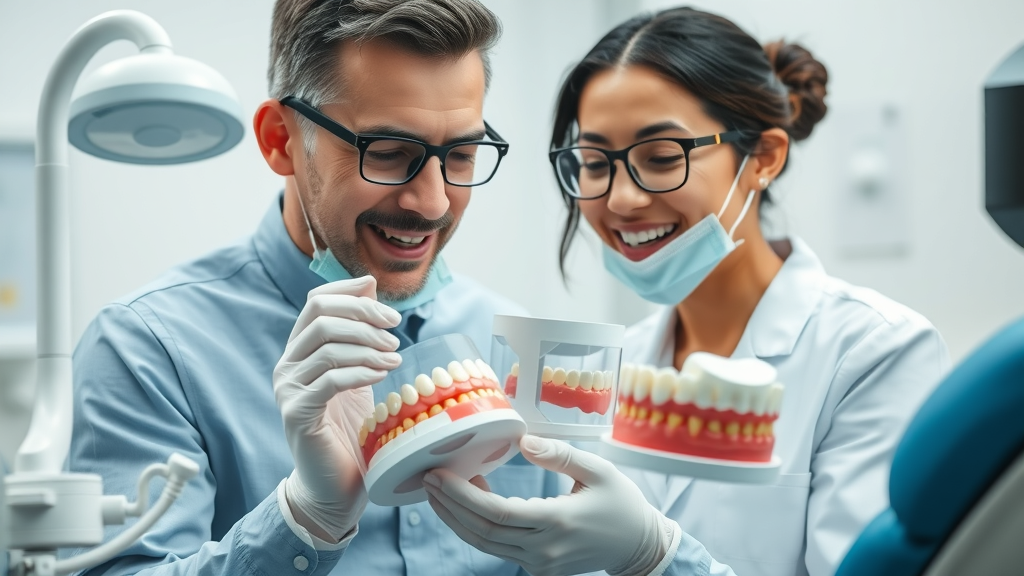
"Orthodontic care goes far beyond simply correcting crooked teeth — our job is to harmonize the function and appearance of the entire teeth and jaw system." — Dr. Jamie Liu, Board-Certified Orthodontist
Core Orthodontic Problems: Beyond Crooked Teeth and Their Impact on Oral Health
The reality is that orthodontic problems extend far below the surface—literally and figuratively. While crooked teeth are common, underlying problems like misaligned jaws, bad bite (malocclusion), and crowded teeth can impact everything from oral hygiene to speech and even general health.
For example, serious bite problems such as overbites and underbites don’t only affect the appearance of your smile. They often cause wear and tear on tooth enamel, raise the risk for tooth decay and gum disease , and can lead to discomfort in the jaw or headaches. By targeting these core orthodontic problems , orthodontists protect against more severe complications later in life, from TMJ pain to difficulties chewing nutritious foods. The goal is always aligned teeth and jaws that work together seamlessly.
Malocclusions: Overbites, Underbites, Crossbites, and Their Orthodontic Treatment
Malocclusions refer to any misalignment of the teeth and jaws, such as overbites, underbites, or crossbites . These bite problems are some of the most common reasons people seek orthodontic care . Overbites cause the upper teeth to protrude, while underbites result in a prominent lower jaw. Crossbites occur when upper and lower teeth do not align correctly side to side, which can lead to oral health problems such as facial asymmetry, abnormal wear, and even gum disease.
Addressing malocclusions often involves traditional braces or clear aligners . In severe cases, orthodontists may recommend surgical intervention or specialized dental appliances to bring proper balance and harmony to the bite. Early detection and treatment can prevent complications, ensuring that teeth and jaws are properly aligned for efficient function and an attractive appearance.
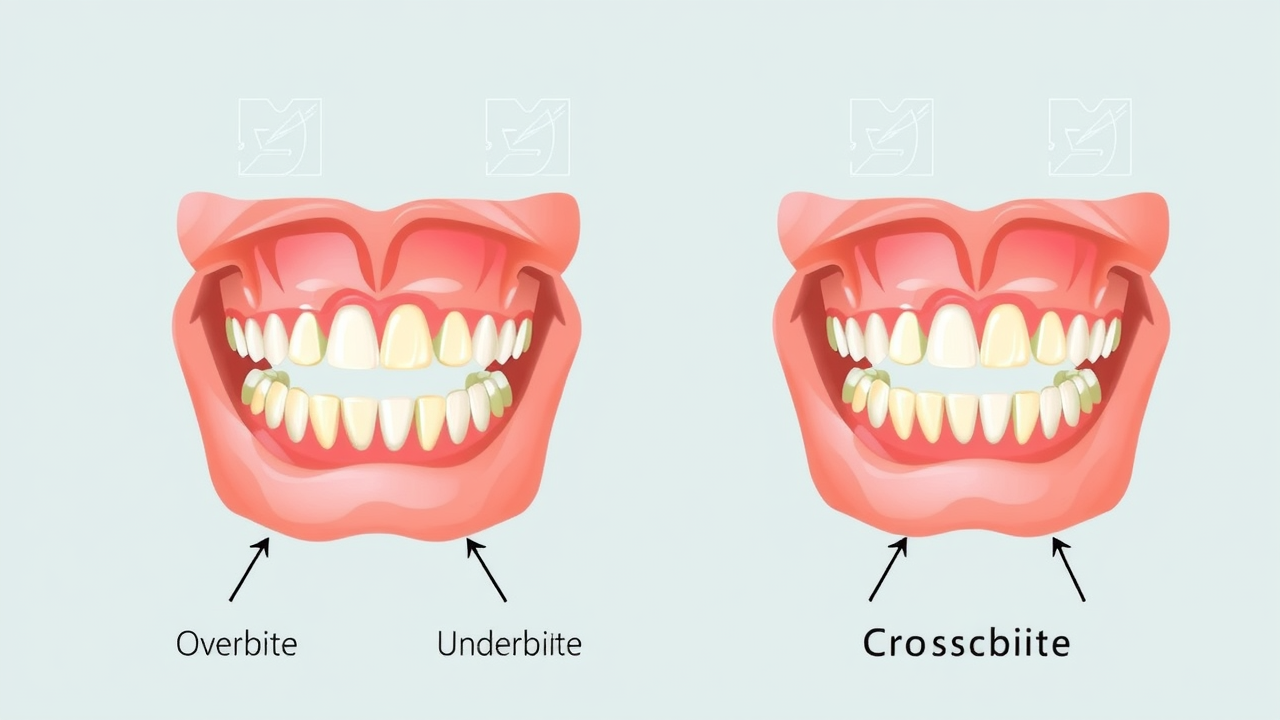
Jaw Growth Issues: Orthodontic Solutions for Misaligned Teeth and Jaws
Jaw growth problems can lead to misaligned teeth and jaws , TMJ disorders, and even chronic pain. Sometimes, the lower or upper jaw does not develop at the same rate as the other, resulting in an unbalanced bite or facial appearance. Symptoms may include jaw popping, headaches, and uneven wear on teeth. This often affects children and teens as their jaws are developing, but untreated issues can persist into adulthood.
Orthodontists use a variety of methods to diagnose and correct jaw alignment problems, including expanders, elastics, and (in rare cases) jaw surgery . The goal is to restore ideal relationships between teeth and jaw , relieving functional discomfort while improving aesthetics. With early intervention, specialists can even guide jaw growth, minimizing the need for invasive treatments later.
Crowding and Spacing Problems: Aligned Teeth for Oral Health
Crowded teeth or excessive spacing between teeth may seem like minor annoyances, but they’re major contributors to tooth decay and gum disease . When teeth overlap or are too far apart, it becomes harder to maintain good oral hygiene —food particles and bacteria are more likely to hide in places your toothbrush can’t reach.
Orthodontic care addresses these alignment issues by using braces, clear aligners , or occasionally minor extractions. Not only does this help you achieve straight teeth , but it also supports healthy gums and reduces the risk of more serious health problems down the road. Aligned teeth and jaws are much easier to clean, allowing you to preserve both a beautiful smile and oral health .
Orthodontic Care for Functional and Aesthetic Improvements
Orthodontic care isn’t all about looks—functionality matters, too. An orthodontist’s main goal is to create aligned teeth and jaws that support efficient chewing, clear speech, and even healthy breathing. Treating issues early can prevent discomfort in daily life and longer-term complications like decay and gum disease . The blend of functional improvement and aesthetic enhancement is what makes orthodontic treatment so valuable.
Today’s orthodontic issues are addressed with sophisticated technology that prioritizes both comfort and results. Whether you’re seeking care for yourself or your child, knowing the broad benefits of treatment—beyond just straightening teeth—helps you make informed decisions about oral health.
Airway, Speech, and Chewing: Why Orthodontists Treat More Than Crooked Teeth
Problems like mouth-breathing, loud snoring, or struggling to pronounce certain words often have roots in the teeth and jaw . If the dental arches don’t develop properly, it can limit the space in the mouth or disrupt the airway—sometimes leading to sleep apnea. Children may experience speech delays or have difficulty chewing solid foods because of jaw alignment problems.
By correcting underlying skeletal or dental issues, orthodontic treatment restores normal function and comfort. Techniques may include the use of palatal expanders, braces, or clear aligners tailored to each patient’s unique needs. Collaborations with other specialists, such as speech therapists, are also common to ensure the best result for the whole patient.

TMJ Disorders and Jaw Pain: Specialist Orthodontic Approaches
TMJ disorders cause jaw pain, stiffness, headaches, and even locking of the jaw joint. Many people live with these symptoms without realizing that orthodontic care can help. TMJ issues often result from misaligned bites or chronic clenching, both of which orthodontists are trained to spot and correct.
Specialist approaches to TMJ disorders may include bite adjustment with braces or aligners, use of oral appliances, physical therapy, or in severe cases, surgery. These treatments are designed to ease tension, restore smooth jaw movement, and eliminate pain, returning patients to a normal, comfortable life. Addressing TMJ is just one more example of how orthodontic care encompasses far more than a straight smile.
Modern Orthodontic Treatments: Braces, Clear Aligners, and More
Technology in orthodontics today has evolved, making orthodontic treatment options more comfortable, discreet, and effective. Whether you’re interested in traditional braces or modern clear aligners , there’s a solution tailored for every type of orthodontic issue . Understanding your choices empowers you to select the right path to aligned teeth and jaws .
Each approach—braces, aligners, appliances, or even surgical enhancements—comes with unique advantages. Let’s compare the most common options below.
Traditional Braces vs. Clear Aligners: Options for All Orthodontic Issues
Traditional braces are still the gold standard for complex orthodontic problems , particularly in children or teens with significant misalignment or bite discrepancies. These devices use metal brackets and wires to gradually move teeth and jaw into alignment, achieving precise results even in challenging cases.
Clear aligners , such as those seen in popular brands, have revolutionized the field. They offer a comfortable, nearly invisible way to fix misaligned teeth , correct minor spacing, and even address some bite problems. While not suitable for every patient, clear aligner treatment is particularly helpful for adults and teens seeking a discreet option. Your orthodontist can help you decide what’s right for your specific needs.
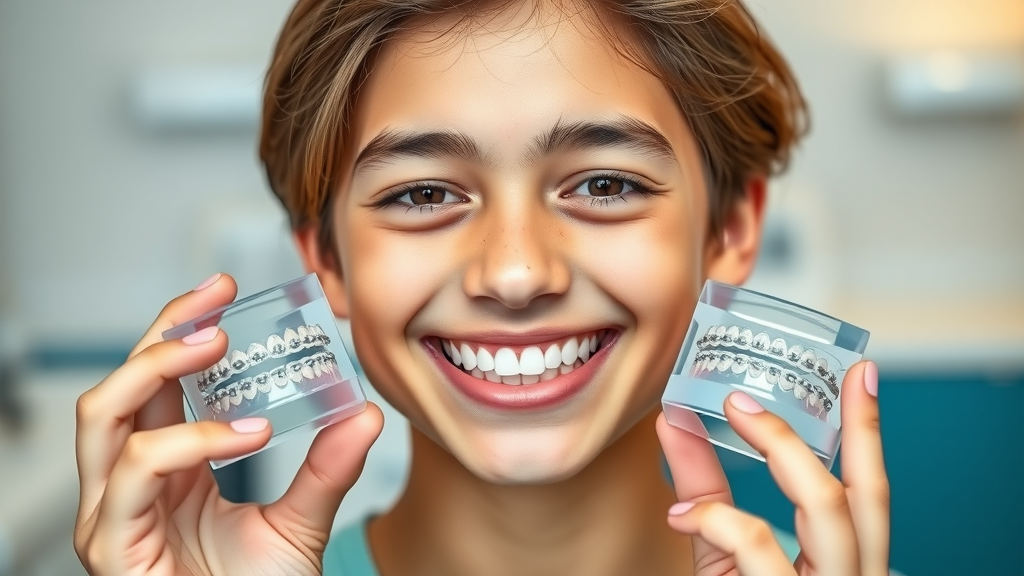
Appliances and Surgical Options for Complex Orthodontic Treatment
For more complicated orthodontic issues , orthodontists may recommend specialized appliances (like palatal expanders, retainers, or headgear ) or even surgical intervention. Appliances can gently widen dental arches, correct jaw position, or support tooth movement. Surgery, often done in partnership with oral surgeons, may be necessary for severe jaw discrepancies or facial syndromes.
Thanks to ongoing advances in orthodontic treatments , even complex cases can be managed more efficiently, with reduced discomfort and downtime. Your orthodontist will always evaluate your case carefully to suggest the safest, most effective path to a fully functional and attractive bite.
Special Populations: Early Intervention and Adult Orthodontic Care
Orthodontic care benefits everyone—from young children whose jaws are still growing to adults facing new or lingering bite problems . Early detection is especially crucial, as interceptive treatment can sometimes prevent more invasive dental work later. However, it’s never too late to seek help; adult orthodontic treatment addresses functional and aesthetic concerns at any age.
Your orthodontist’s approach will always consider your age, dental health, and specific needs, ensuring optimal results and a lasting beautiful smile .
Interceptive Orthodontic Treatments for Children
Early or interceptive orthodontic treatments are designed to guide proper jaw growth and alignment in children, often before all their adult teeth come in. These include appliances like palate expanders, space maintainers, and limited braces . Early interventions can spot and correct issues such as crossbites or severe crowding, making treatment easier (and sometimes shorter) when kids are older.
The American Association of Orthodontists recommends an initial orthodontic assessment by age 7. By catching problems early, specialists not only ensure aligned teeth but may help avoid surgical intervention later. Interceptive care also supports normal speech, chewing, and facial development—key factors in a child’s confidence and health.
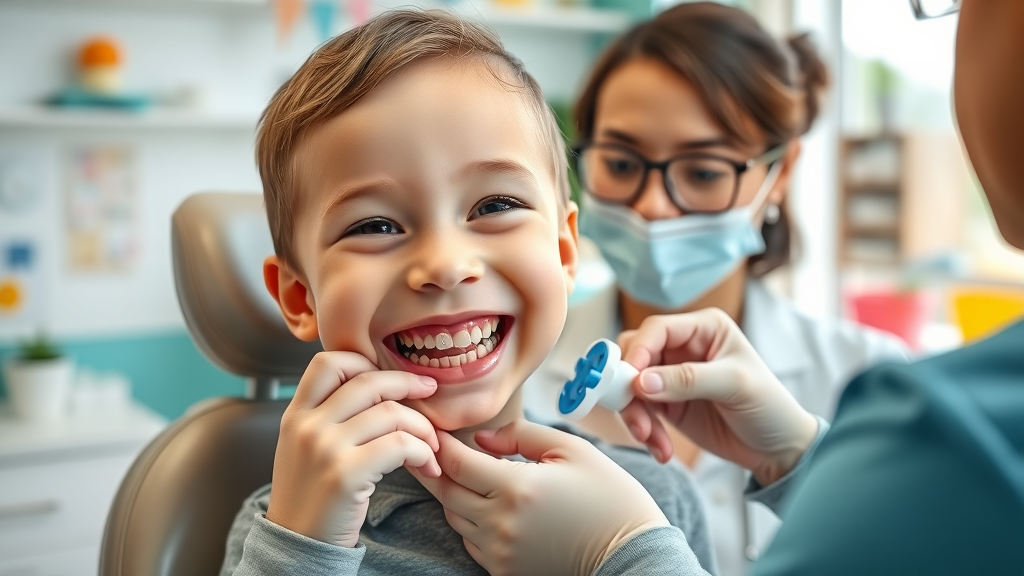
Adult Orthodontic Treatment: Addressing Bite and Jaw Concerns Later in Life
Adult orthodontic care is on the rise, as more people recognize the benefits of aligned teeth and jaws for both health and appearance. Many adults seek treatment for problems not fully addressed as kids—like jaw alignment issues, TMJ pain, or new crowding caused by shifting teeth.
Modern options like clear aligners and ceramic braces make it easier to discreetly correct alignment and bite problems at any stage. Treatment for adults often includes multidisciplinary care, especially when working around missing teeth, dental implants, or restorative work . The result: improved oral health , reduced risk for decay and gum disease, and a more confident, beautiful smile .
Orthodontic Problems Requiring Multidisciplinary Care
Some orthodontic issues are so complex they require a team approach. This is especially true for patients needing reconstruction after trauma, those with congenital syndromes, or individuals who benefit from jaw surgery alongside orthodontic care. Collaboration with oral surgeons, restorative dentists, and even speech therapists ensures a holistic, lasting result.
Working together, your orthodontist and other dental professionals can develop a comprehensive plan that supports both function and aesthetics, no matter how challenging your case may be.
-
Jaw surgery in coordination with oral surgeons
-
Dental restorations after orthodontic realignment
-
Speech therapy when needed
Watch an orthodontist explain the wide scope of care, with patient stories highlighting how treatment can improve oral function, facial balance, and overall confidence.
Key Questions Answered: What Conditions Do Orthodontists Treat Besides Crooked Teeth?
What does an orthodontist specialize in?
Orthodontists specialize in diagnosing, preventing, and correcting irregularities of the teeth and jaws, including issues with bite, alignment, spacing, and functional disorders such as TMJ.
What are the 4 branches of orthodontics?
The four main branches are preventive orthodontics, interceptive orthodontics, corrective orthodontics, and surgical orthodontics. Each focuses on different stages or aspects of orthodontic care.
What sort of problems require orthodontic treatment?
Problems addressed include malocclusions (overbites, underbites, crossbites), jaw misalignment, crowded or spaced teeth, functional problems with chewing/speech, and TMJ disorders.
Do orthodontists do anything other than braces?
Yes. Orthodontists use a wide variety of appliances , including clear aligners, expanders, retainers , and occasionally coordinate with surgeons or other specialists for comprehensive care.
Real patients describe their experiences receiving orthodontic treatment for jaw and bite concerns, from diagnosis to life-changing results.
Frequently Asked Questions About Orthodontic Treatment and Issues Beyond Crooked Teeth
-
How long does non-cosmetic orthodontic treatment take?
Treatment duration depends on the problem being addressed. Simple cases may take less than a year, while complex orthodontic treatments can last two years or more. Your orthodontist will provide a personalized timeline based on your individual needs. -
Can orthodontic care help with sleep apnea?
Yes, certain orthodontic appliances or treatment plans can help open the airway and manage mild to moderate sleep apnea , especially in children and young adults. -
Is surgery always needed for jaw alignment problems?
No. Many jaw alignment issues can be addressed with appliances, braces, or growth modification in younger patients. Surgery is considered only for the most severe cases or when non-surgical methods are insufficient. -
Do clear aligners work for all bite and jaw issues?
Clear aligners are great for mild to moderate alignment and spacing concerns, but may not be effective for all complex bite problems or jaw discrepancies. Your orthodontist can recommend the best option for you after a comprehensive exam.
Orthodontic Care: Achieving Aligned Teeth and Jaws for Lifelong Oral Health
Orthodontic care is about more than getting straight teeth ; it's an investment in your overall oral health and well-being. When teeth and jaws are properly aligned, the risks of tooth decay and gum disease decrease, chewing and speaking improve, and your smile radiates new confidence. Thanks to modern techniques and technology, achieving a healthy bite is more comfortable and accessible than ever.
"Early assessment and treatment by an orthodontist can prevent complex dental and jaw issues later in life."
Take the First Step: Ask Your Orthodontist About All Treatment Options
If you or your loved one is experiencing orthodontic issues —from crooked teeth to jaw pain or speech problems—schedule a consultation with a specialist. Together, you'll explore treatment options for aligned teeth and jaws that not only look great but function for a healthier, happier future.
Orthodontic care extends beyond straightening crooked teeth, addressing a variety of conditions that impact oral health and overall well-being. For instance, the article “Not Just Braces: Surprising Things an Orthodontist Can Treat” highlights that orthodontists can alleviate jaw pain and TMJ disorders through strategic bite adjustments and specialized appliances, reducing stress on the jaw joint and improving function. ( kleinrockorthodontics.com ) Additionally, “What Problems Do Orthodontists Treat Besides Crooked Teeth?” discusses how orthodontic interventions can correct speech problems caused by misaligned teeth or jaws, enhancing articulation and boosting confidence. ( mccomborthodontics.com ) If you’re seeking comprehensive solutions for issues like jaw discomfort or speech difficulties, these resources provide valuable insights into the broader scope of orthodontic treatments.
 Add Row
Add Row  Add
Add 

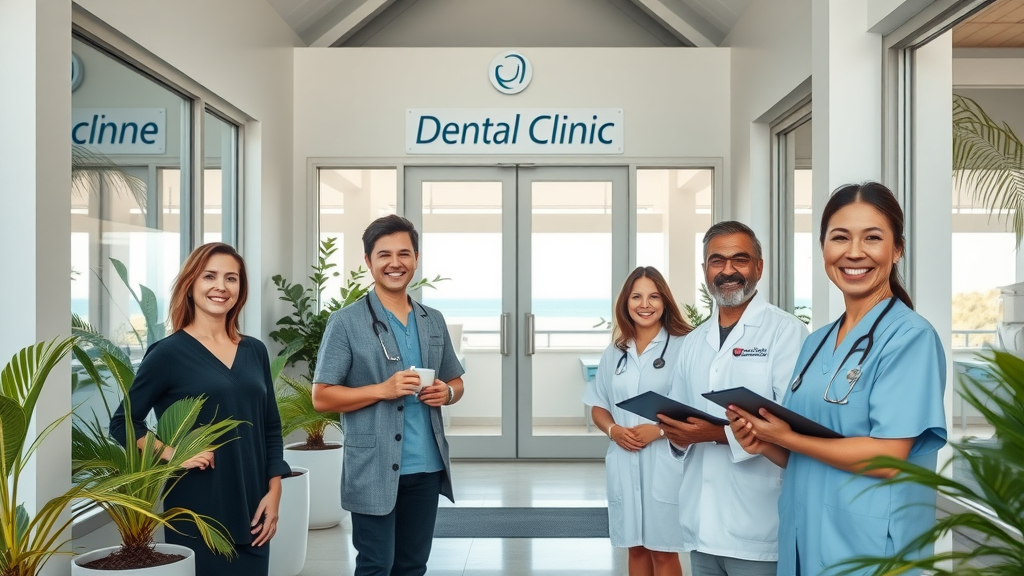


Write A Comment